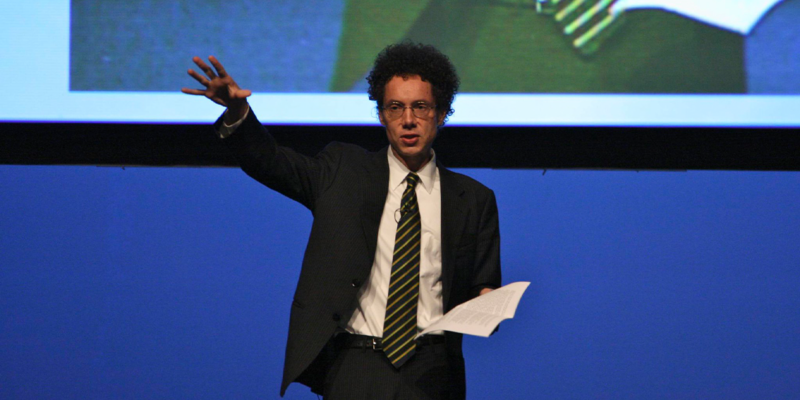InfoComm: The Changing Business of AV Integration
Dan Daley
Special to InfoComm International
 The pro-AV business landscape has been fluid for some time. The tectonic shift from analog to digital as the technological foundation of the industry set the tone for constant change, as new platforms and formats, from digital audio to 4K video, have generated relentless technical churn.
The pro-AV business landscape has been fluid for some time. The tectonic shift from analog to digital as the technological foundation of the industry set the tone for constant change, as new platforms and formats, from digital audio to 4K video, have generated relentless technical churn.
At the same time, the commercial side of the business was doubly challenged by the Great Recession. Most major verticals reined in spending starting in 2008, while at the same time, the pro-AV industry witnessed growing incursions on its flanks from residential integrators fleeing the challenged housing sector, IT businesses eyeing AV as an adjunct service, and others. More recently, there has been several years’ worth of merger-and-acquisition activity that has changed the makeup of both the service-provider and the vendor sides of pro AV. In short, it’s been a head-spinning time for commercial audiovisual companies.
Tom Peters, CTS®, General Manager of Garden-Grove, Calif.-based SybaTek, has seen challenges from multiple angles.
“Competition is getting more diverse, while at another level it’s consolidating,” says Peters, who is also a past president of InfoComm International, citing the just-announced merger of large AV integration companies Diversified and Technical Innovations. “We see residential dealers migrating into the commercial space, often with a very different mindset from traditional commercial integrators. We also see IT firms attempting to broaden their role with clients, again with a different mindset. In addition, the ubiquity of AV has led some influencers, such as design firms and project management firms, to attempt to set budgets without the ability to ascertain the desires and needs of the client, which then often leaves the client with an inadequate budget for their needs. And once budgets are set, it is very hard to move them higher. So funds that could have been spent on technology end up on the floor, or in the bathroom fixtures, rather than in AV systems. It is more important than ever to ensure that AV experts are at the table from the beginning.”
Lisa Perrine, CTS, CEO of Cibola Systems, a 17-employee AV and network design firm in Orange County, Calif., says consolidation’s impact varies based on what’s being consolidated. She’s less concerned about conglomeration among the AV systems integrators that Cibola might work with to execute its designs, which she views as cyclical, than she is about consolidation among manufacturers, which can use the added heft to squeeze out integrators, designers and consultants that are also product dealers.
“They might say that there’s no intention to bypass the integrator, but it doesn’t always work out that way,” she says. On the other hand, Perrine notes, manufacturers that expand through M&A often take a long time to fully integrate new divisions into a coherent single entity. “And not every company can achieve that,” she says.
Opportunity Knocks
Bill Rigsby, CTS-D, CEO of AVSI Group, a 50-employee firm based in Houston, says that although industry consolidation can shake up the business terrain, it also can create opportunities, noting that AV and IT aren’t the only sectors being affected by consolidation.
“Globalization may be an overworked term these days, but it is forcing companies that are our clients to find ways to do more with fewer human resources,” he says. “And that’s something we can help them with.”
Rigsby says the technology now available offers integrators the tools they need to create systems that can be scaled globally but managed centrally, reducing clients’ needs for trained operators at their various locations around the world. “We can let them run a conference room in one city from a control room in another,” he explains. “That results in huge cost savings for them in the form of fewer employees dedicated to technical operations.”
It also presents a new potential revenue stream for AV integrators, which can remotely monitor those systems for maintenance and management purposes, adding even more efficiency to the mix. “That also has the benefit for the client of being able to predict potential problems and address them quickly rather than reacting to them after the fact,” Rigsby says. “Everything we’re talking about here is a business opportunity.”
Phillip Cordell, CTS-D, Director of Engineering at M3 Technology Group, an integrator with 55 employees based in Nashville, Tenn., with additional offices in the Southeast, says new revenue streams have become an area of intense focus in recent years. However, he notes, the ability to generate new revenue is intertwined with workforce education.
“AV firms, like in all industries, must continue to find new ways to generate revenue,” he says. “But due to the ever-changing technological landscape, it is imperative that AV professionals continue to further their education and remain knowledgeable of current and future technologies. The AV landscape remains competitive, as IT and managed service companies consider forays into our industry. At M3, we aim to hire the brightest talent available to allow us to easily roll with the changes in our markets. When a company has top-notch employees who see the changes coming or who have experience with converging markets, we are able to plan accordingly and prepare in advance for the market growth. Oftentimes, they already have the processes in place to handle the type of service-oriented business plan to which many in the AV industry are just now catching on.”
SybaTek, Cibola Systems, M3 Technology Group and AVSI Group all are recognized by InfoComm as Audiovisual Provider of Excellence (APEx) companies. InfoComm’s APEx program is becoming an integral part of how AV integrators find opportunity in a changing AV universe.
“Our inclusion in the APEx program has been a fantastic way to show our customers and our peers that our company is focused on quality,” says M3 Technology Group’s Cordell. “Our prominent display of the APEx logo has sparked conversations and discussions, which inevitably lead to our core philosophy of providing an excellent experience.”
AVSI Group’s Bill Rigsby concurs, noting that the APEx logo is a powerful differentiator in a crowded landscape of competition. “It’s phenomenally important,” he says of APEx. “Not only does it help us do better by insisting on repeatable processes, like an ISO 9000 governance process, but it also makes us apply those processes across the spectrum, such as to quality control. In that way, it’s also differentiating us from the shade-tree mechanic shops that promise clients the world but can’t deliver and have no design or commissioning standards. In the end, we don’t mind competing with other APEx integrators, because it ultimately makes the entire industry stronger.”
Adversity and opportunity are linked in the evolving business landscape of AV integration. Savvy integrators are finding ways to turn the first into the other.
This column is reprinted with permission from InfoComm International and originally appeared here.





